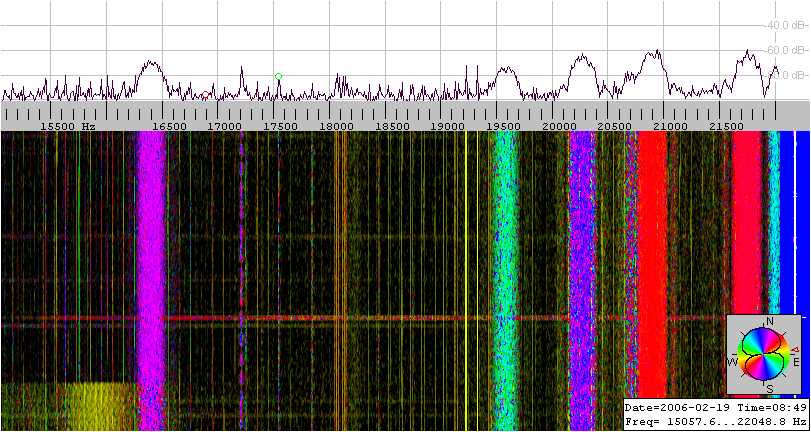
This is just a temporary collection of recent VLF spectra. It starts with a historic transmission Grimeton Radio on 17.2 kHz using the Alexanderson alternator. The RDF compass shows the "beam pattern", which was required to remove noise coming from a certain direction :

... and a bit later during the transmission. Note the slightly drifting frequency (mechanic generator! ), and the weak remaining carrier during the KEY-UP periods. The strong signal on 16.4 kHz is JXN from Norway.
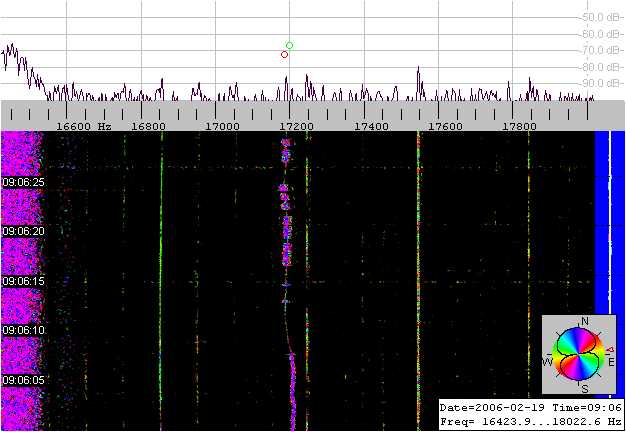
Other "recent" VLF spectrograms in radio-direction finder mode (using the ugly ferrite loop which can be seen here on the DL4YHF website):
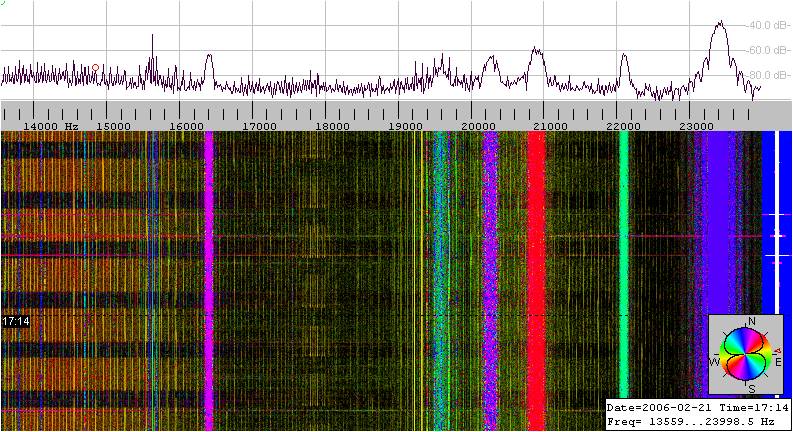
Note that this signal is taken with a 48 kHz sampling rate, which puts the DHO38 signal where it should be (23.4 kHz). One some other screenshots (which were taken with a 44.1 kHz sampling rate), the DHO38 signal was mirrored as a "phantom signal" on a wrong frequency.
Another screenshot, with a faster running waterfall which clearly shows three Russian "Alpha" signals from various directions, and the effect of the beam-shaping (via software) which was turned on until 21:55:05 to remove the yellow broadband noise. This was received with an indoor antenna and a lot of "local" noise. The peak on 15.625 kHz is not a VLF transmitter, but the neighbour's TV set(s?) with 50-Hz sidebands which let the signal appear a bit broad.
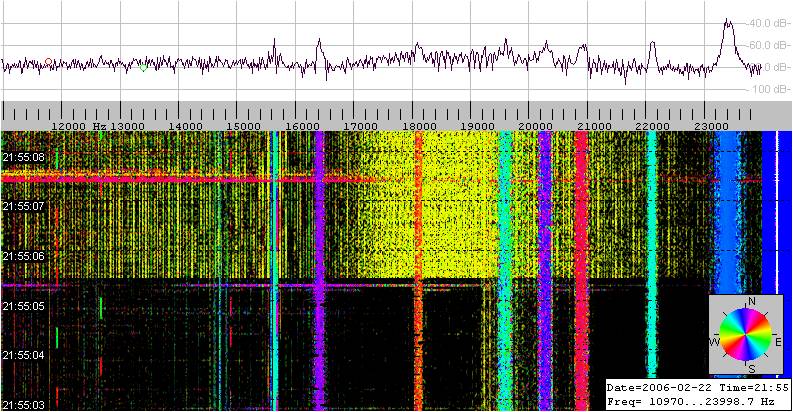
No radio-direction finder spectrogram but my first successful reception of "NML", a VLF transmitter in North Dakota on 25.2 kHz. Received with a single-turn VLF loop (60 cm diameter) and an SDR-IQ instead of the soundcard. Note that NML is about 15 dB down on NAA (Cutler, Maine). Received in northern Germany during the summer, around 12:00 UTC .
The big difference between the above and most other spectrograms is the receiving site: It's about 300 meters away from all houses; only a few underground power line cables affect the reception.
For comparison between the active single-turn, ferrite-less loop and the ferrite "RDF" loop, here is a VLF radio-direction finder spectrogram with an equivalent receiver noise bandwidth of 4.3 Hz; received with an EMU-0202 running at 192 kSamples/second. The European transmitters are visible, and also the station NWC (Harold E. Holt, Australia) on 19.8 kHz:
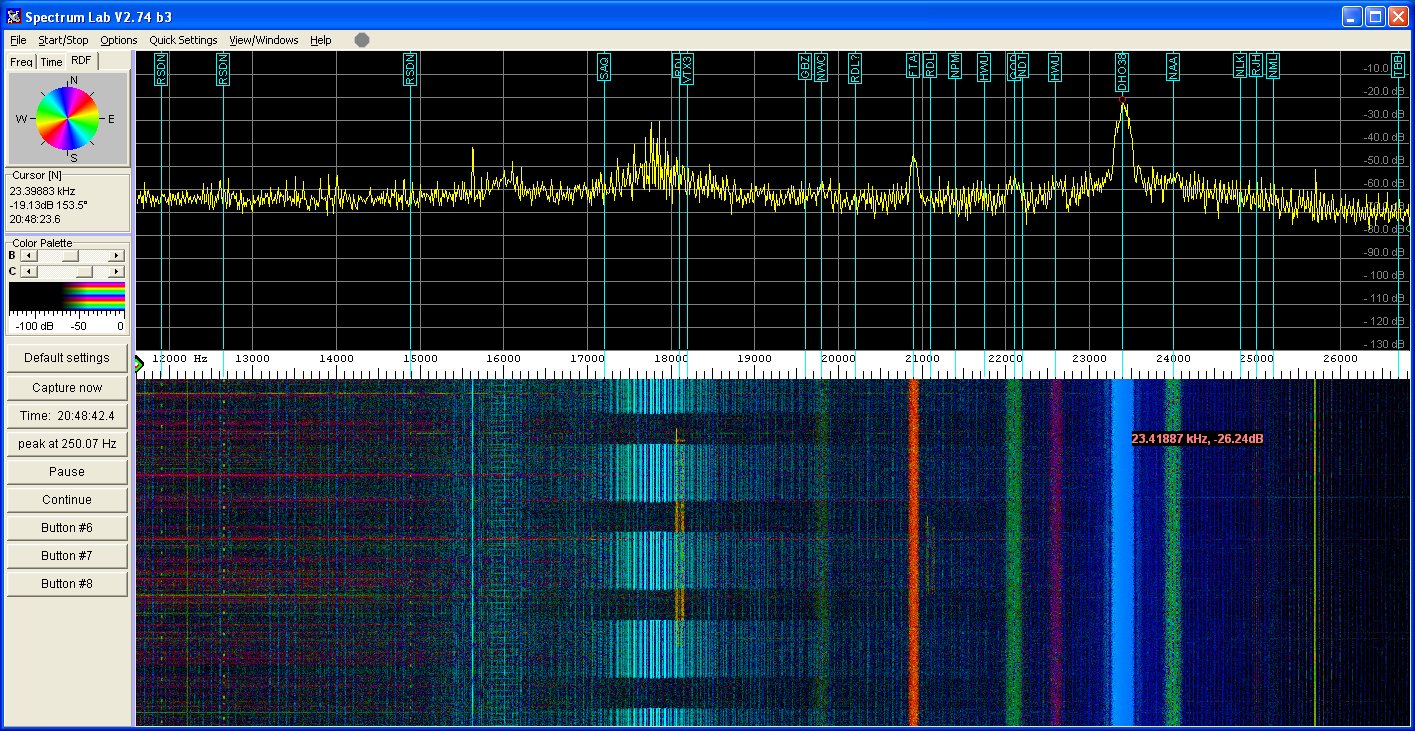
Same frequency range, same location, almost the same time, but two different antennas:
The ferrite antenna seems to pick up more "garbage" (causing the fence-like pattern in the spectrogram); possibly caused by a non-linear magnetic effect, or due to E-field pickup (more experimentation required..)
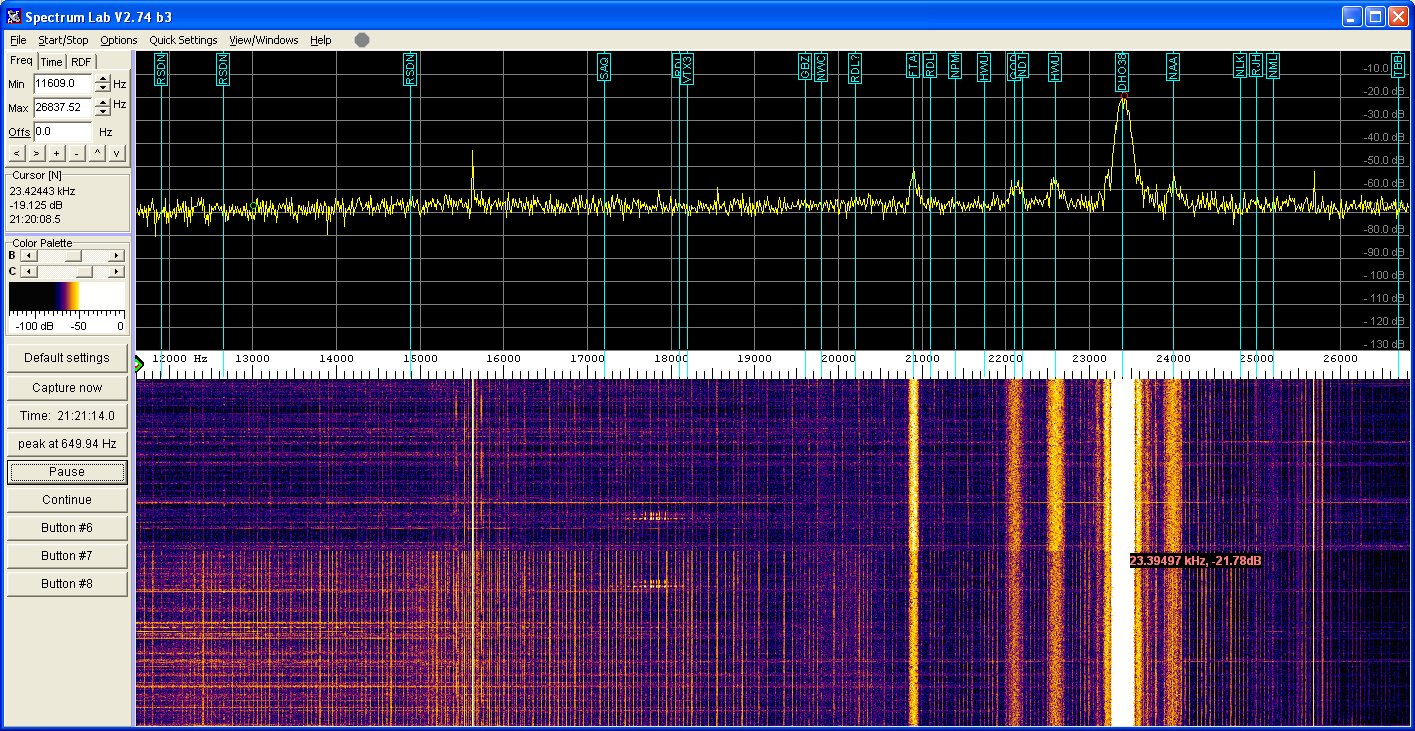
Next test: Comparison between the ferrite- and air core loop antennas, both oriented for reception in East/West direction. Again there are spurious signals on the ferrite loop, which are not present in the signal picked up by the single-turn air core loop (in the center of the spectrogram, labelled in green):
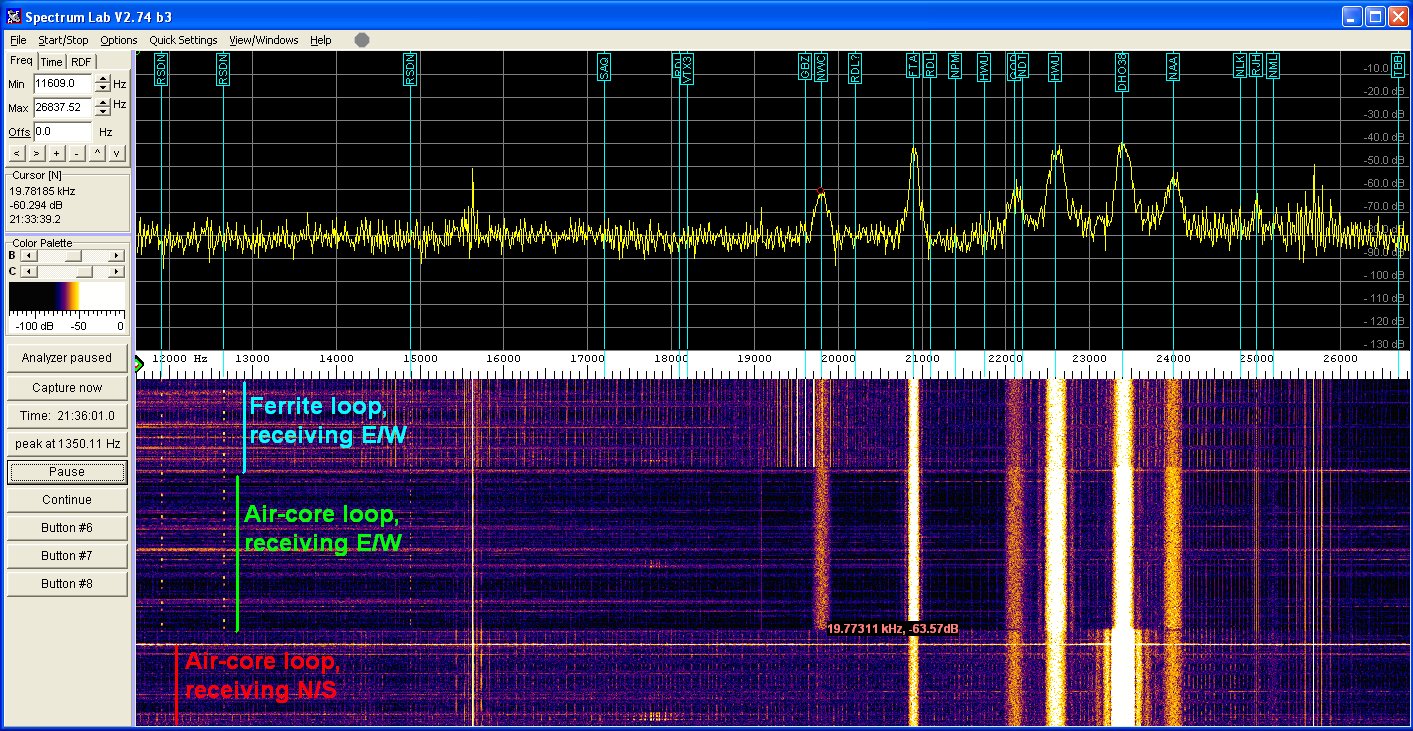
Initial tests of the single-turn air core loop in the audible VLF are described here.
Audio spectra measured with an SDR-IQ and the VLF loop antenna described above, still used indoors:
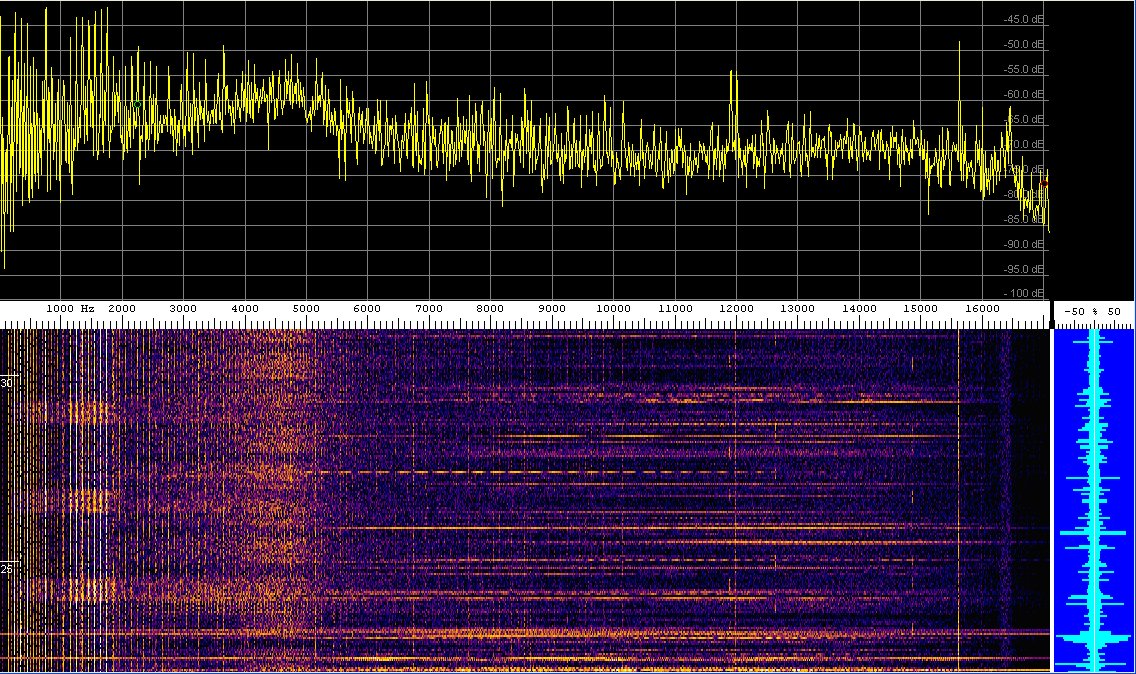
Audio spectrum with the VLF loop, without filtering
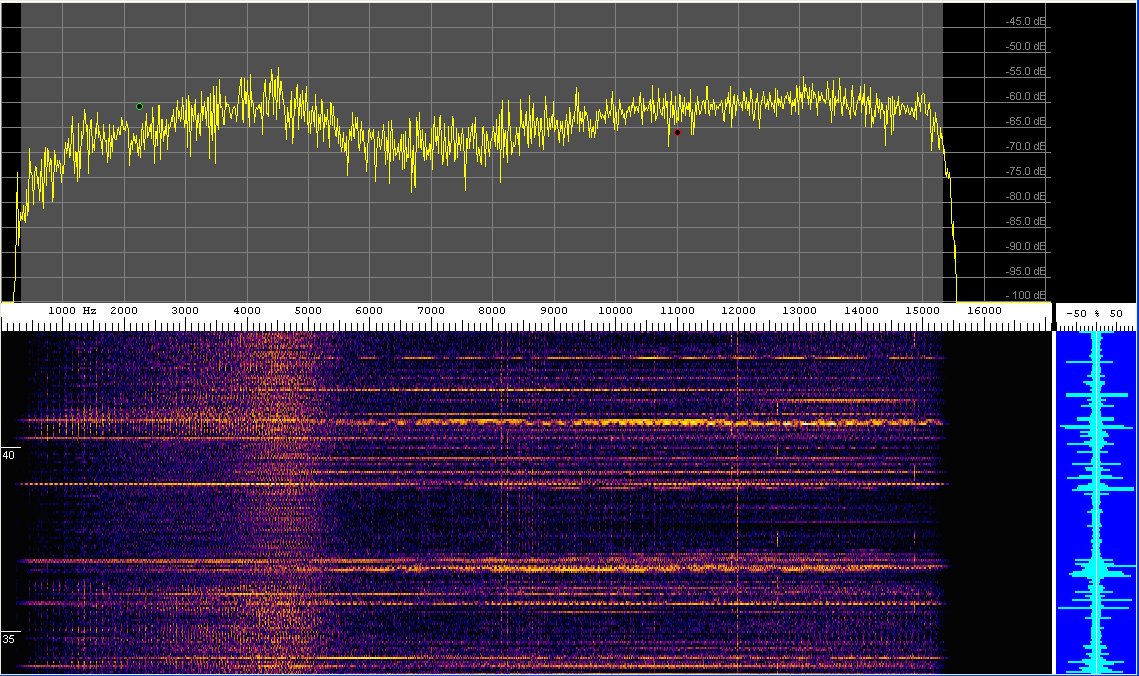
Audio spectrum with the VLF loop, automatic notch filter enabled
2009-12-12, 20 to 50 kHz about 21:00 UTC:
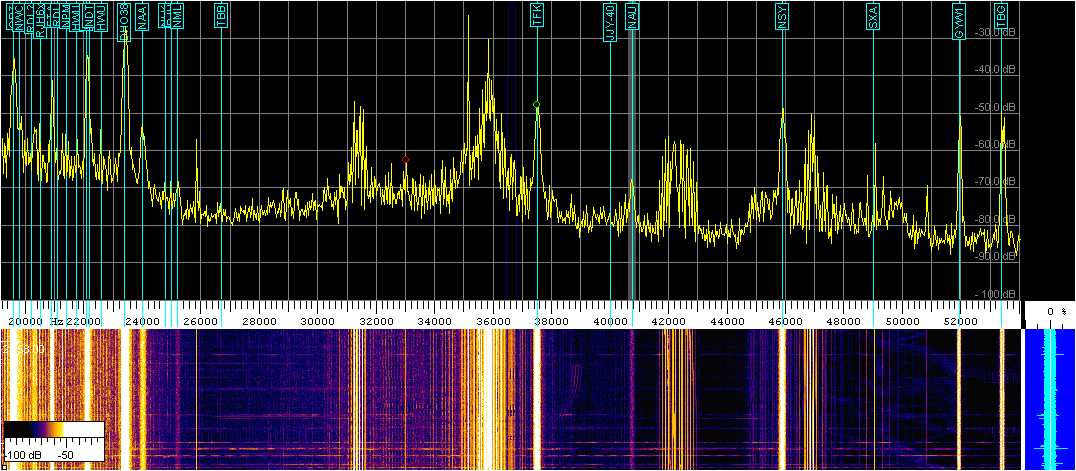
Spectrum from 20 to 50 kHz with the same loop, no filtering,
with QRM from energy saving bulbs and SMPSUs.

Narrow-band spectrum of 'BPC', a time signal transmitter from China on 68.5 kHz.
Received with a single-turn air core loop, operated indoors.
To be continued ...